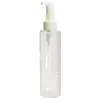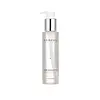What's inside
What's inside
 Key Ingredients
Key Ingredients

 Benefits
Benefits

 Concerns
Concerns

 Ingredients Side-by-side
Ingredients Side-by-side

Ethylhexyl Palmitate
EmollientParaffinum Liquidum
EmollientIsopropyl Myristate
EmollientPEG-20 Glyceryl Triisostearate
EmollientC13-15 Alkane
SolventPEG-8 Diisostearate
EmulsifyingOryza Sativa Bran Oil
EmollientWater
Skin ConditioningPyrus Malus Seed Oil
EmollientParfum
MaskingTocopheryl Acetate
Antioxidant1,2-Hexanediol
Skin ConditioningAloe Barbadensis Leaf Polysaccharides
EmollientButylene Glycol
HumectantInulin
Skin ConditioningAcrylates/C10-30 Alkyl Acrylate Crosspolymer
Emulsion StabilisingAlpha-Glucan Oligosaccharide
CleansingCaprylic/Capric Triglyceride
MaskingEchinacea Purpurea Extract
MoisturisingHydroxyacetophenone
AntioxidantMaltodextrin
AbsorbentTamarindus Indica Seed Polysaccharide
Skin ConditioningCalendula Officinalis Flower Oil
MaskingCrithmum Maritimum Callus Culture Filtrate
Skin ProtectingGlycerin
HumectantGlycolipids
Skin ConditioningHydrogenated Lecithin
EmulsifyingPistacia Lentiscus Gum
MaskingPotassium Hydroxide
BufferingCeramide NP
Skin ConditioningEthylhexylglycerin
Skin ConditioningMoringa Oleifera Seed Oil
EmollientPhenethyl Alcohol
MaskingPhospholipids
Skin ConditioningPhytosphingosine
Skin ConditioningSwertia Chirata Extract
HumectantEthylhexyl Palmitate, Paraffinum Liquidum, Isopropyl Myristate, PEG-20 Glyceryl Triisostearate, C13-15 Alkane, PEG-8 Diisostearate, Oryza Sativa Bran Oil, Water, Pyrus Malus Seed Oil, Parfum, Tocopheryl Acetate, 1,2-Hexanediol, Aloe Barbadensis Leaf Polysaccharides, Butylene Glycol, Inulin, Acrylates/C10-30 Alkyl Acrylate Crosspolymer, Alpha-Glucan Oligosaccharide, Caprylic/Capric Triglyceride, Echinacea Purpurea Extract, Hydroxyacetophenone, Maltodextrin, Tamarindus Indica Seed Polysaccharide, Calendula Officinalis Flower Oil, Crithmum Maritimum Callus Culture Filtrate, Glycerin, Glycolipids, Hydrogenated Lecithin, Pistacia Lentiscus Gum, Potassium Hydroxide, Ceramide NP, Ethylhexylglycerin, Moringa Oleifera Seed Oil, Phenethyl Alcohol, Phospholipids, Phytosphingosine, Swertia Chirata Extract
Paraffinum Liquidum
EmollientCarthamus Tinctorius Seed Oil
MaskingPEG-20 Glyceryl Triisostearate
EmollientOctyldodecanol
EmollientPolybutene
Dicaprylyl Carbonate
EmollientEthylhexyl Palmitate
EmollientIsopropyl Myristate
EmollientUndecane
EmollientSimmondsia Chinensis Seed Oil
EmollientMacadamia Integrifolia Seed Oil
Skin ConditioningPearl Extract
AntioxidantHelianthus Annuus Seed Oil
EmollientCodium Tomentosum Extract
Skin ProtectingEnteromorpha Compressa Extract
Skin ProtectingMacrocystis Pyrifera Extract
Skin ConditioningEcklonia Cava Extract
Skin ConditioningGelidium Cartilagineum Extract
Skin ProtectingLaminaria Japonica Extract
Skin ProtectingSea Whip Extract
Skin ConditioningChlorella Vulgaris Extract
Skin ConditioningMacadamia Ternifolia Seed Oil
EmollientSpirulina Platensis Extract
Skin ProtectingAloe Barbadensis Leaf Polysaccharides
EmollientGlycerin
HumectantTridecane
PerfumingWater
Skin ConditioningSqualane
EmollientTocopheryl Acetate
Antioxidant1,2-Hexanediol
Skin ConditioningButylene Glycol
HumectantTocopherol
AntioxidantCaprylyl Glycol
EmollientCeramide 3
Skin ConditioningPhytosphingosine
Skin ConditioningParfum
MaskingParaffinum Liquidum, Carthamus Tinctorius Seed Oil, PEG-20 Glyceryl Triisostearate, Octyldodecanol, Polybutene, Dicaprylyl Carbonate, Ethylhexyl Palmitate, Isopropyl Myristate, Undecane, Simmondsia Chinensis Seed Oil, Macadamia Integrifolia Seed Oil, Pearl Extract, Helianthus Annuus Seed Oil, Codium Tomentosum Extract, Enteromorpha Compressa Extract, Macrocystis Pyrifera Extract, Ecklonia Cava Extract, Gelidium Cartilagineum Extract, Laminaria Japonica Extract, Sea Whip Extract, Chlorella Vulgaris Extract, Macadamia Ternifolia Seed Oil, Spirulina Platensis Extract, Aloe Barbadensis Leaf Polysaccharides, Glycerin, Tridecane, Water, Squalane, Tocopheryl Acetate, 1,2-Hexanediol, Butylene Glycol, Tocopherol, Caprylyl Glycol, Ceramide 3, Phytosphingosine, Parfum
Ingredients Explained
These ingredients are found in both products.
Ingredients higher up in an ingredient list are typically present in a larger amount.
1,2-Hexanediol is a synthetic liquid and another multi-functional powerhouse.
It is a:
- Humectant, drawing moisture into the skin
- Emollient, helping to soften skin
- Solvent, dispersing and stabilizing formulas
- Preservative booster, enhancing the antimicrobial activity of other preservatives
Aloe Barbadensis Leaf Polysaccharides comes from the aloe plant.
The aloe plant is naturally abundant in polysaccharides. Polysaccharides are a carbohydrate made of sugar molecules. Polysaccharides help hydrate your skin.
Butylene Glycol (or BG) is used within cosmetic products for a few different reasons:
Overall, Butylene Glycol is a safe and well-rounded ingredient that works well with other ingredients.
Though this ingredient works well with most skin types, some people with sensitive skin may experience a reaction such as allergic rashes, closed comedones, or itchiness.
Learn more about Butylene GlycolEthylhexyl Palmitate, also known as octyl palmitate, is created from 2-ethylhexyl alcohol and palmitic acid. It is a fatty acid ester.
The fatty acid content of Ethylhexyl Palmitate makes it an emollient. Emollients help soften and hydrate your skin by trapping moisture within.
Ethylhexyl Palmitate is also used to help improve the texture of cosmetics. It helps other ingredient dissolve in products and help disperse ingredients more evenly.
You'll likely find this ingredient in sunscreen, as it is often used to mix UV-blocking ingredients such as avobenzone and ethylhexyl triazone.
It can also help stabilize the fragrances in a product as a fragrance fixative.
Ethylhexyl Palmitate can be used to substitute mineral oil.
Due to its high fatty acid content, it may not be fungal-acne safe.
Learn more about Ethylhexyl PalmitateGlycerin is already naturally found in your skin. It helps moisturize and protect your skin.
A study from 2016 found glycerin to be more effective as a humectant than AHAs and hyaluronic acid.
As a humectant, it helps the skin stay hydrated by pulling moisture to your skin. The low molecular weight of glycerin allows it to pull moisture into the deeper layers of your skin.
Hydrated skin improves your skin barrier; Your skin barrier helps protect against irritants and bacteria.
Glycerin has also been found to have antimicrobial and antiviral properties. Due to these properties, glycerin is often used in wound and burn treatments.
In cosmetics, glycerin is usually derived from plants such as soybean or palm. However, it can also be sourced from animals, such as tallow or animal fat.
This ingredient is organic, colorless, odorless, and non-toxic.
Glycerin is the name for this ingredient in American English. British English uses Glycerol/Glycerine.
Learn more about GlycerinIsopropyl Myristate is an emollient, thickening agent, and texture enhancer. It is created from isopropyl alcohol and myristic acid.
It is used to help other ingredients be better absorbed. It is also an emollient and may help soften and hydrate the skin.
The comedogenic rating of this ingredient depends on the concentration. Lower amounts results in a lower rating.
Isopropyl Myristate may not be fungal acne safe. It can potentially worsen acne prone skin.
Learn more about Isopropyl MyristateParaffinum Liquidum is also known as liquid paraffin. It is a type of highly refined mineral oil.
Like other oils, Paraffinum Liquidum has emollient properties. Emollients help soothe and soften the skin. By creating a barrier to trap moisture within, emollients help keep your skin hydrated.
Paraffinum Liquidum does not irritate the skin and is non-comedogenic.
Learn more about Paraffinum LiquidumParfum is a catch-all term for an ingredient or more that is used to give a scent to products.
Also called "fragrance", this ingredient can be a blend of hundreds of chemicals or plant oils. This means every product with "fragrance" or "parfum" in the ingredients list is a different mixture.
For instance, Habanolide is a proprietary trade name for a specific aroma chemical. When used as a fragrance ingredient in cosmetics, most aroma chemicals fall under the broad labeling category of “FRAGRANCE” or “PARFUM” according to EU and US regulations.
The term 'parfum' or 'fragrance' is not regulated in many countries. In many cases, it is up to the brand to define this term.
For instance, many brands choose to label themselves as "fragrance-free" because they are not using synthetic fragrances. However, their products may still contain ingredients such as essential oils that are considered a fragrance by INCI standards.
One example is Calendula flower extract. Calendula is an essential oil that still imparts a scent or 'fragrance'.
Depending on the blend, the ingredients in the mixture can cause allergies and sensitivities on the skin. Some ingredients that are known EU allergens include linalool and citronellol.
Parfum can also be used to mask or cover an unpleasant scent.
The bottom line is: not all fragrances/parfum/ingredients are created equally. If you are worried about fragrances, we recommend taking a closer look at an ingredient. And of course, we always recommend speaking with a professional.
Learn more about ParfumPeg-20 Glyceryl Triisostearate comes from Isostearic Acid and glycerin.
It is an emollient, emulsifier, and gentle cleanser. As an emollient, it helps trap moisture to keep skin soft and hydrated. Emulsifiers help prevent ingredients from separating.
This ingredient is common in oil-based products. This is because it helps oil-ingredients be easily washed away without leaving a residue.
Peg-20 Glyceryl Triisostearate may not be fungal-acne safe.
Learn more about PEG-20 Glyceryl TriisostearatePhytosphingosine is a phospholipid naturally found in our skin as a building block for ceramides.. It helps moisturize, soothe, and protect skin.
Phytosphingosine contributes to your skin's natural moisturizing factor (NMF). The NMF is responsible for hydration, a strong barrier, and plasticity. Our NMF decreases with age. Increasing NMF leads to more healthy and hydrated skin.
Studies show products formulated with NMF ingredients help strengthen our skin's barrier. Having a healthy skin barrier reduces irritation and increases hydration. Our skin barrier is responsible for having plump and firm skin. It also helps protect our skin against infection, allergies, and inflammation.
Fun fact: Phytosphingosine is abundant in plants and fungi.
More ingredients that help boost collagen in skin:
Learn more about PhytosphingosineTocopheryl Acetate is AKA Vitamin E. It is an antioxidant and protects your skin from free radicals. Free radicals damage the skin by breaking down collagen.
One study found using Tocopheryl Acetate with Vitamin C decreased the number of sunburned cells.
Tocopheryl Acetate is commonly found in both skincare and dietary supplements.
Learn more about Tocopheryl AcetateWater. It's the most common cosmetic ingredient of all. You'll usually see it at the top of ingredient lists, meaning that it makes up the largest part of the product.
So why is it so popular? Water most often acts as a solvent - this means that it helps dissolve other ingredients into the formulation.
You'll also recognize water as that liquid we all need to stay alive. If you see this, drink a glass of water. Stay hydrated!
Learn more about Water